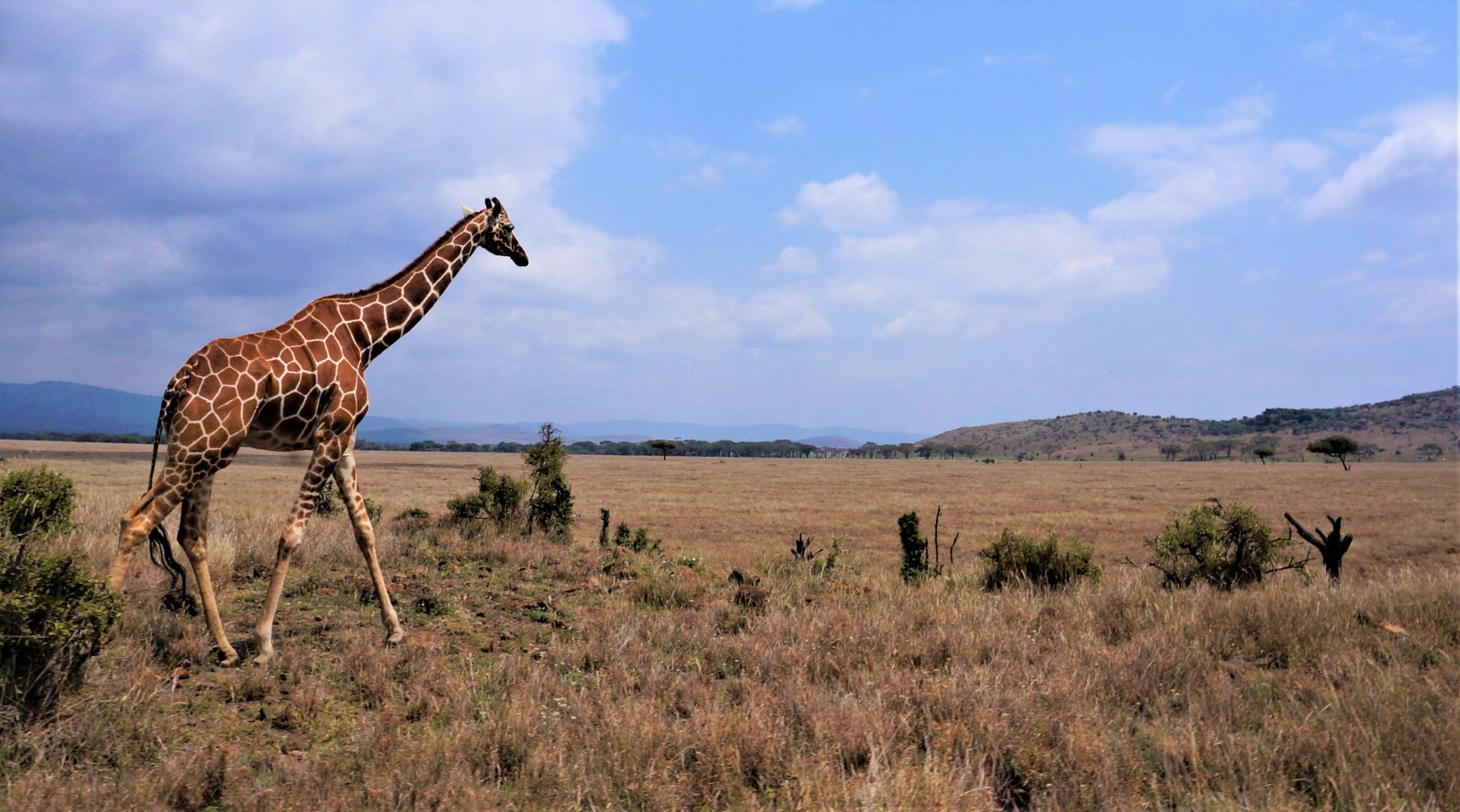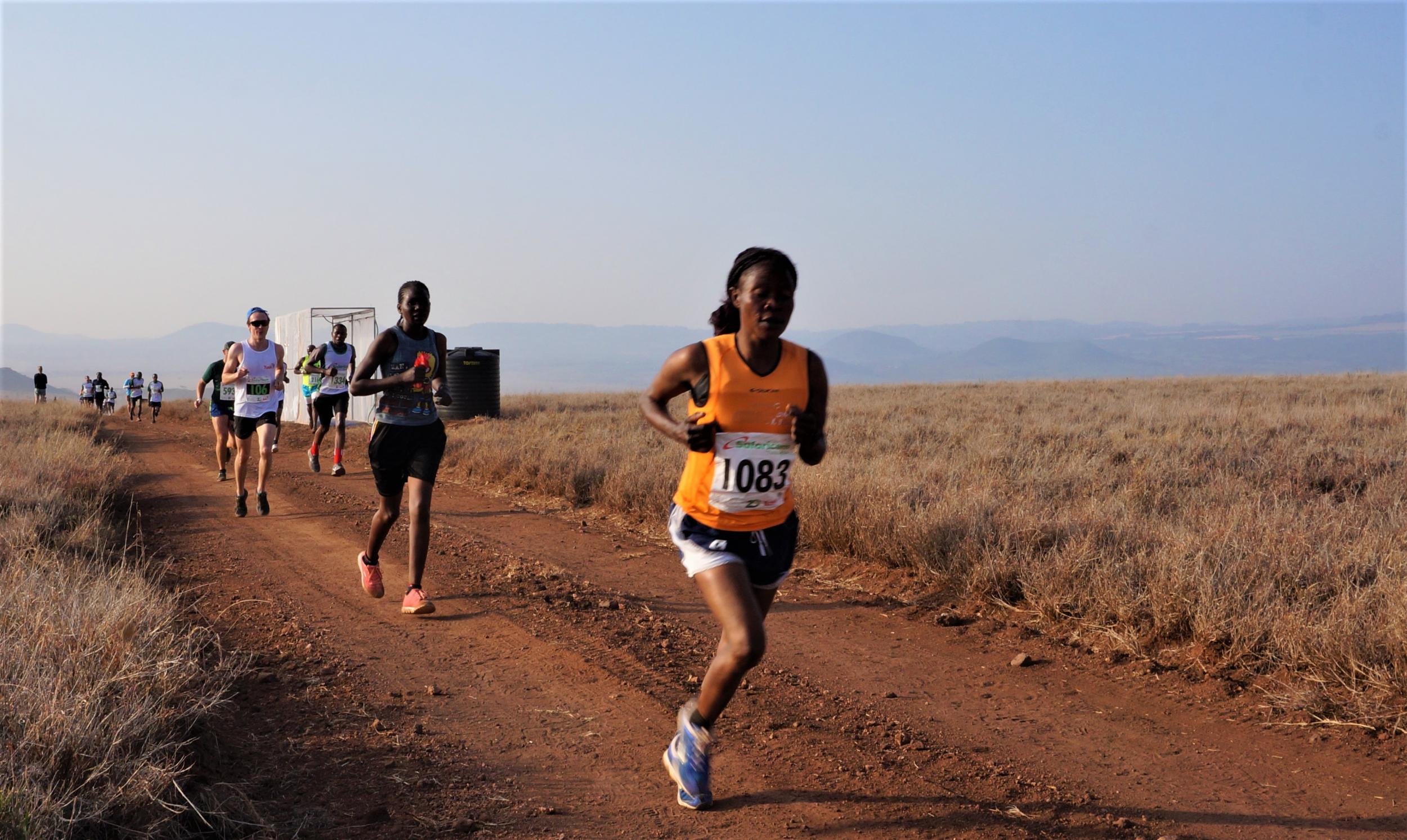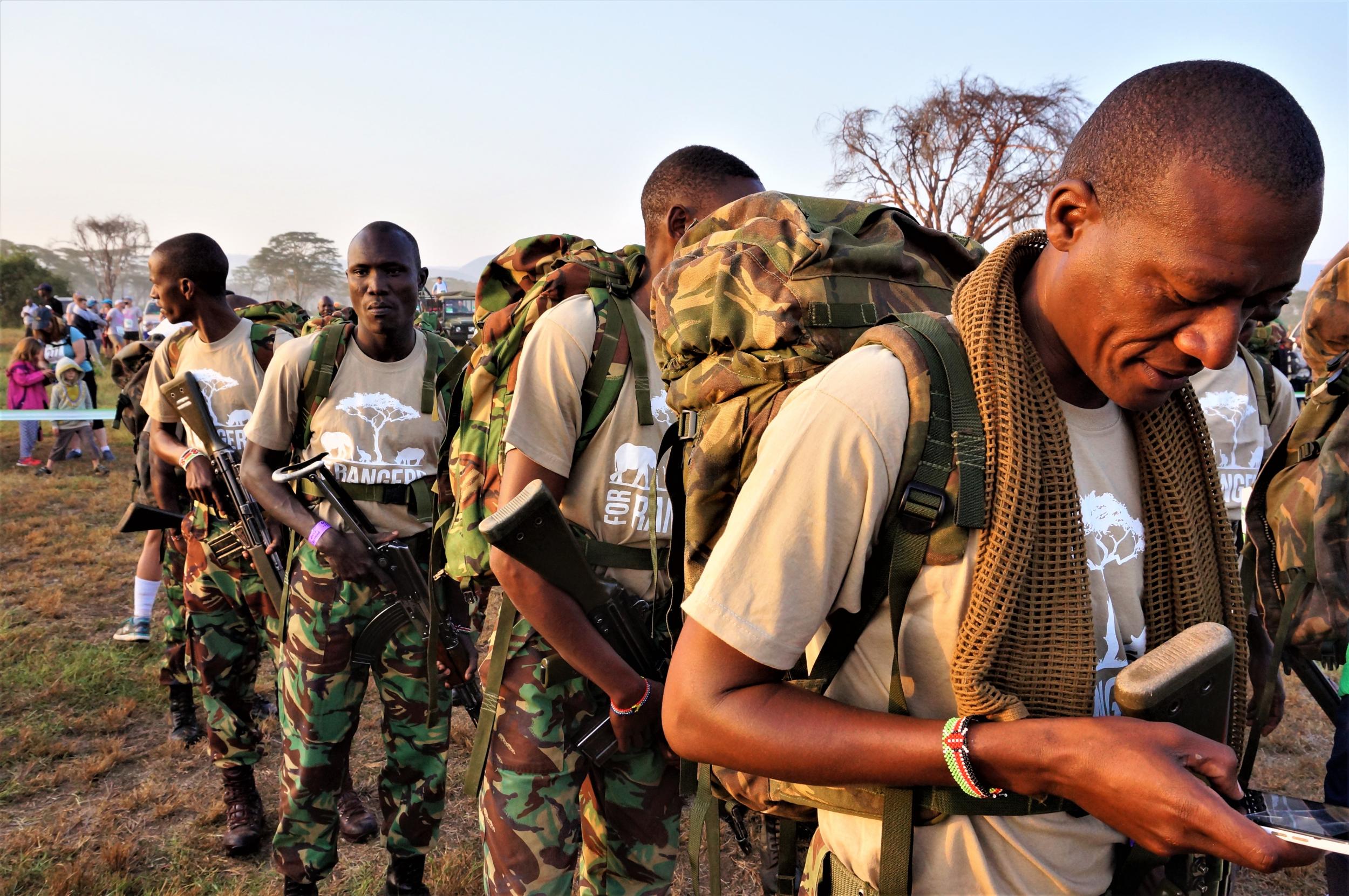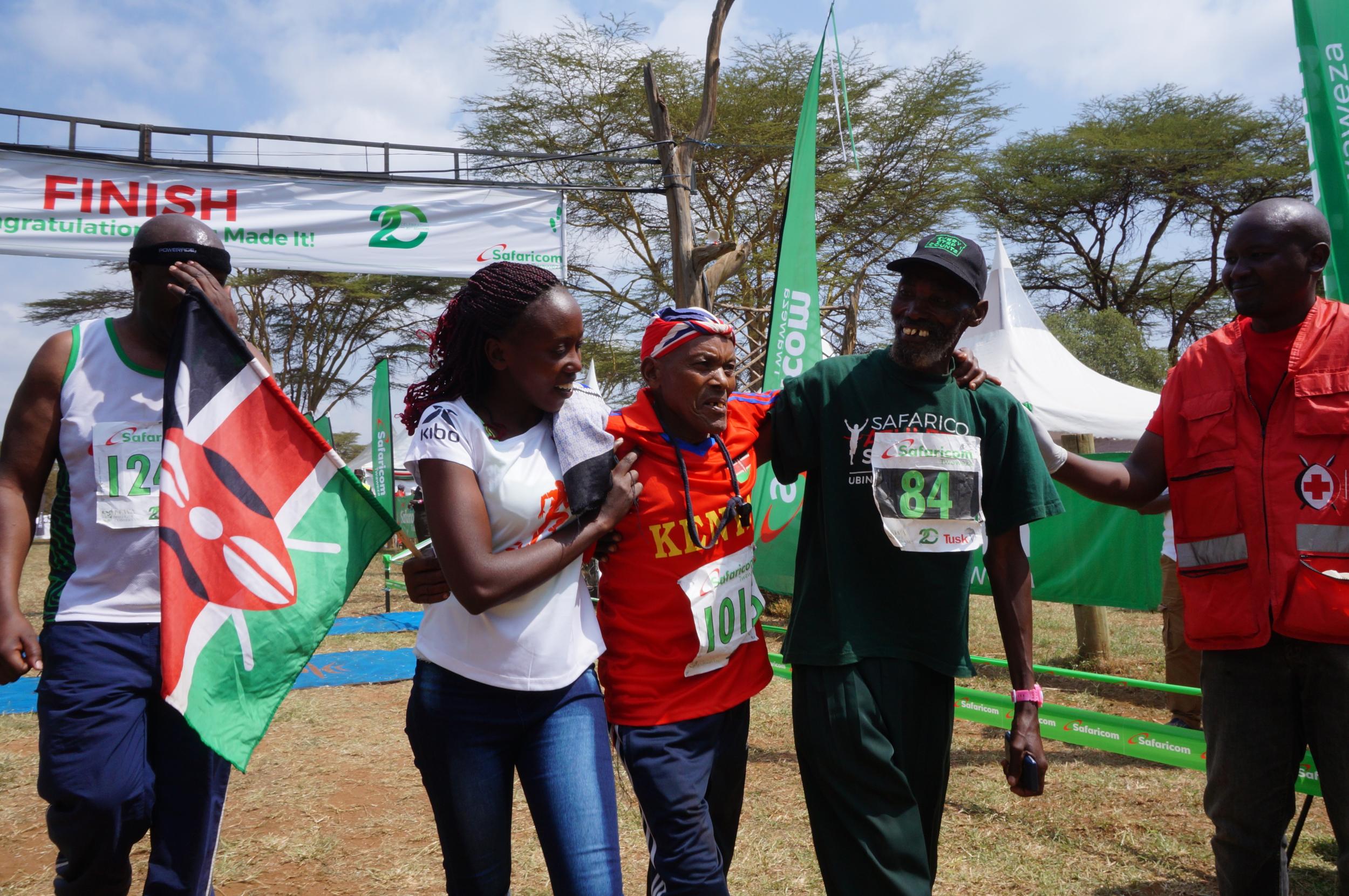Lions, camel soup and scorching heat: Running a marathon through a wildlife reserve
Animals aren’t blocked from the course – runners often pass herds of zebra or giraffe lingering in the distance, writes Naomi Larsson


Your support helps us to tell the story
From reproductive rights to climate change to Big Tech, The Independent is on the ground when the story is developing. Whether it's investigating the financials of Elon Musk's pro-Trump PAC or producing our latest documentary, 'The A Word', which shines a light on the American women fighting for reproductive rights, we know how important it is to parse out the facts from the messaging.
At such a critical moment in US history, we need reporters on the ground. Your donation allows us to keep sending journalists to speak to both sides of the story.
The Independent is trusted by Americans across the entire political spectrum. And unlike many other quality news outlets, we choose not to lock Americans out of our reporting and analysis with paywalls. We believe quality journalism should be available to everyone, paid for by those who can afford it.
Your support makes all the difference.John Ruengo might be an octogenarian, but he still has enough energy to dance as he finishes a 21km race through gruelling heat and dust in a Kenyan savannah.
“I’m 89 years old and still strong,” he tells The Independent, claiming a diet of camel soup has kept him going.
“Practice makes perfect. I started running in 1948 when I was a boy and since that time I have never left.”
For the 20th time, and since its inception, Ruengo has crossed the finish line holding his national flag at the Safaricom Marathon in Lewa Wildlife Conservancy (LWC), a Unesco World Heritage site.
The marathon is one of the toughest races in the world, and the only one to take place through a wildlife reserve. With an altitude of more than 5,500ft above sea level, a large part of the course is uphill, rolling across savannah plains and acacia woodland. There’s no respite from northern Kenya’s harsh sun, and participants battle the dust whipped up from the dirt road.
“It’s got all the worst combinations,” says David Thuo, an aircraft engineer from Nairobi who completed the half marathon. “The altitude is very high, it goes uphill ... but I did get to see giraffes.”
Runners say it’s the wildlife and landscape that draws them to these remote plains in Lewa. Sixteen-year-old runner Winfred, who came in the top 10 in the children’s 5km race, says she “enjoyed seeing the wildlife. It’s a special race.”
A 61,000-acre area of protected land, the conservancy is home to critically endangered black rhino and Grevy’s zebra, as well as elephant and the big cats. The wildlife isn’t blocked from the course – runners often pass herds of zebra or giraffe lingering in the distance.
“We’ve been trying to train the lions to become vegetarian but we haven’t succeeded,” Tusk CEO Charlie Mayhew said in the briefing the night before the race, drawing a nervous laugh from the crowd.
Led by conservation charity Tusk and LWC, the idea to organise a marathon though the reserve came from a conversation between Mayhew and the then-CEO of Lewa conservancy in the late Nineties.

Tourists staying at the lodge would often ask if they could go for a jog. “And the answer is of course you can’t – but then it sparked an idea,” says Mayhew. “What about organising a running event here and using it as a way to raise money for conservation and the LWC?”
Over the years Tusk has raised $5m for conservation efforts here in Lewa and across Kenya. The conservancy and the neighbouring communities who live here are supported by funds raised by the marathon – a medical clinic has opened, while a water irrigation project in nearby farmland has reached more than 4,000 people.
“When great minds come together good things happen,” says Henry Wanyoike, 45-year-old Kenyan Paralympic champion. “I’m happy to be a part of it because the community benefits, and the environment, the animals. It’s very important for everyone.”
We only interfere if the less friendly species are getting close to the track
For organisers the impact is far-reaching, “planting a seed” for future conservationists.
From just 180 runners two decades ago, the race has grown to 1,400 participants from more than 27 countries. Runners from across Kenya take part, including wildlife rangers carrying full kit who represent the neighbouring conservancies, and warriors from local communities.

Organisers say they’ve reached the limit – any more infrastructure to cater for participants and spectators would have too much of an impact on the reserve and its wildlife.
On the race weekend you find rows of tents, stalls and music stages for post-race celebrations making it feel like its own version of Glastonbury (it takes place over the same weekend in June as the festival). There’s airport-style security, medical staff, caterers. “It’s a logistical nightmare,” says Mayhew.
Indeed, the very nature of organising a marathon through a wildlife reserve brings its own set of challenges over the safety of humans, animals and landscape.
Independent researchers conduct an environmental impact assessment of the marathon on the reserve every two to three years. But Mayhew claims the impact is “remarkably low”.
“There’s a huge amount of conservancy left untouched. Any wildlife that is being spooked by the race has a huge amount of space,” he says. “We only interfere if the less friendly species are getting close to the track.”
It’s not an easy course. To me, if I can make it here, I can make it anywhere in the world
Helicopter and a light aircraft fly overhead looking out for wildlife, while spotters are on hills overlooking the course.
If any of the more dangerous species like buffalo, rhino or lion decide to get a bit too close to the track the airplane or helicopter will guide them away, using the sounds and the wind generated from the aircraft.
Last year a black rhino was spotted close to the course. Undeterred by the helicopter, organisers were forced to briefly stop the race until the rhino was a safe distance away.
“This is what makes it so unique,” Mayhew says. “The whole idea of running in a game reserve really captures people’s imagination.”
On race day the early morning haze soon turned to harsh heat.

“It’s not an easy course. To me, if I can make it here, I can make it anywhere in the world,” says Wanyoike. “But it’s one of the best races. We’re running on our own soil which means a lot.”
Wanyoike is visually impaired, and is guided with his running partner Paul holding a cord. “It’s like an umbilical cord. He has to guide me through this, tell me when we are going up hill… he’s my eyes.”
This was Wanyoike’s 17th marathon at Lewa, where he achieved a personal best for the half at just over 1hr 25min. The full marathon was won by Duncan Maivo at 2hr 20min, and Emmah Kilole at 2hr 50min in the women’s race.
For Kevin Bliss, a regular marathon runner based in the US, it was “by far the toughest race given the terrain and the undulation. But when it got tough, I looked around at the landscape, heard the bird noises. It was awesome.”
The oldest runner, Ruengo, celebrated at the finish line with his children. “I like running because I can’t grow old so quickly. It means a lot to be here.”
Will he do it again? “If God wishes, I will be here next year.”
Join our commenting forum
Join thought-provoking conversations, follow other Independent readers and see their replies
Comments